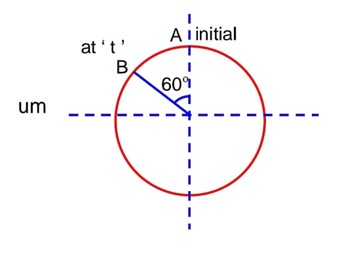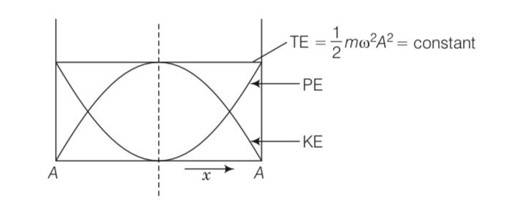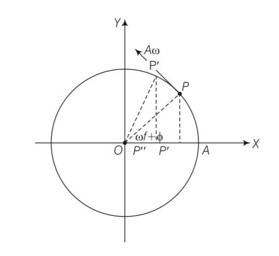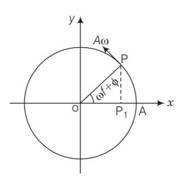Oscillations
Get insights from 99 questions on Oscillations, answered by students, alumni, and experts. You may also ask and answer any question you like about Oscillations
Follow Ask QuestionQuestions
Discussions
Active Users
Followers
New answer posted
5 months agoContributor-Level 10
A = 8 cm
T = 6 sec

q = 60° from A to B
During reaching the point its maximum amplitude from point (A)
t = 1 sec
New answer posted
5 months agoContributor-Level 10
This is a multiple choice answer as classified in NCERT Exemplar
Time period of simple pendulum T=2s
For simple pendulum T= where l is length and g = acceleration due to gravity.
Te=2
On the surface of the moon Tm= 2
=
Te=Tm to maintain the second's pendulum time period
1= …………….1
But the acceleration due to gravity at moon is 1/6 of the acceleration due to gravity at earth,
gm=
squaring equation 1 and putting this value
1=
lm=1/6le = 1/6 m
New answer posted
5 months agoContributor-Level 10
This is a multiple choice answer as classified in NCERT Exemplar
Potential energy of a simple harmonic oscillator is = ½ kx2=1/2mw2x2
K=mw2
When x=0 PE=0
When x= , PE=maximum
=1/2 mw2A2
KE of a simple harmonic oscillator =1/2 mv2
= 1/2 m [w ] 2
= ½ mw2 (A2-x2)
This is also parabola if plot KE against displacement x
KE= 0 at x=
KE=1/2mw2A2 at x=0
Now total energy of the simple harmonic oscillator =PE+KE
= ½ mw2x2+1/2mw2 (A2-x2)
TE= ½ mw2A2
So the curve according to that is

New answer posted
5 months agoContributor-Level 10
This is a multiple choice answer as classified in NCERT Exemplar
As we know x= acoswt
V =dx/dt= a (-sinwt)w=-wasinwt
V=-wasinwt
= wacos ( )
Phase of velocity =
So difference in phse of velocity to that of phase of displacement = =
New answer posted
5 months agoContributor-Level 10
This is a multiple choice answer as classified in NCERT Exemplar
As the particle on reference circle moves in anticlockwise direction. The projection will move from P to O towards left.

Hence in the position shown the velocity is directed from P' to P'' i.e from right to left . hence sign is negative.
New answer posted
5 months agoWhat is the ratio between the distance travelled by the oscillator in one time period and amplitude?
Contributor-Level 10
This is a multiple choice answer as classified in NCERT Exemplar
In the diagram

the motion of a particle executing SHM between A and B
Total distance travelled while it goes from A to B and returns to A is=AO+OB+BO+OA
= A+A+A+A=4A
So ratio of distance and amplitude =4A/A=4
Taking an Exam? Selecting a College?
Get authentic answers from experts, students and alumni that you won't find anywhere else
Sign Up on ShikshaOn Shiksha, get access to
- 66k Colleges
- 1.2k Exams
- 680k Reviews
- 1800k Answers

